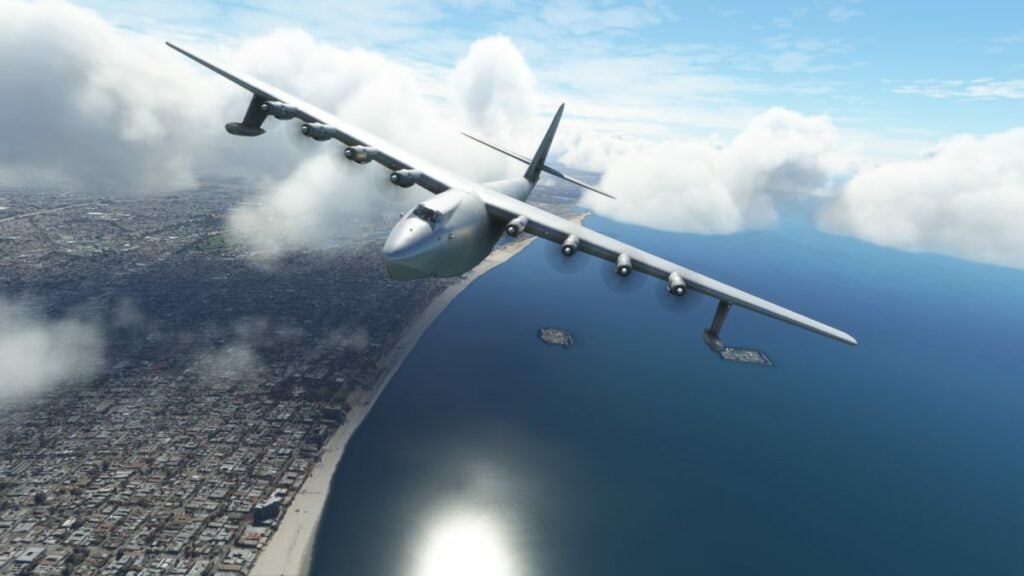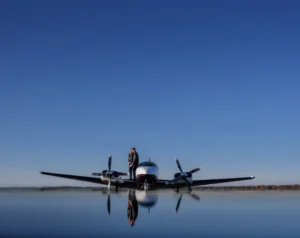When you think of private jets, images of luxury, comfort, and speed often come to mind. But beyond the glamour, one of the most intriguing aspects of private jets is how high they can fly.
Have you ever wondered why private planes take off at altitudes much higher than commercial aircraft? Let’s delve into the reasons why private planes fly higher and the benefits that come with reaching these sky-high altitudes.

Less Air Traffic:-
One of the main reasons private planes fly higher is to avoid the crowded airspace that commercial flights typically occupy. Most commercial airplanes travel between 30,000 and 40,000 feet, which can become very congested, especially in busy air corridors. By flying at higher altitudes often above 40,000 feet, private planes steer clear of the majority of air traffic.
This not only allows for smoother flights but also minimizes the risk of delays caused by congestion or flight path conflicts.At these altitudes, private planes can glide through the sky with more freedom, resulting in a quicker and more efficient travel.
This is particularly important for business travelers or celebrities who are trying to reach their destinations without interruptions.
Better Fuel Efficiency:-
It might seem counterintuitive, but private planes flying higher also leads to better fuel efficiency. The air at higher elevations is thinner, which creates less resistance or drag on the aircraft. With less drag, private jets can fly faster without needing as much power to maintain speed.
This translates into using less fuel, which is not only more cost-effective but also environmentally friendlier.In fact, flying higher allows private planes to optimize their fuel usage, making longer trips possible without needing to stop and refuel. For those flying internationally, this means reaching their destination faster, without the hassle of layovers or refueling stops.
Smoother Flights:-
If you’ve ever been on a commercial flight, you’re likely familiar with turbulence, the sudden bumps that can make flying a bit uncomfortable. One of the advantages of private planes flying higher is that they tend to experience far less turbulence.
Turbulence is often caused by weather patterns and jet streams that occur at lower altitudes, where commercial planes usually fly. By taking off above these weather systems, private planes enjoy a smoother ride, allowing passengers to relax, work, or enjoy their flight without disturbance.

Faster Speeds:-
Flying at higher altitudes also implies private jets can fly faster. With the air being thinner, private planes can travel at higher speeds without the same drag that slows down commercial airplanes. This means that travelers can reach their destinations more quickly.
For high-profile travelers who value every minute, this added speed can make a world of difference.Additionally, private planes have the flexibility to climb to their cruising altitude faster than commercial planes. While it can take commercial aircraft 20 minutes or more to reach cruising altitude, private planes can do so in just a few minutes, getting them up to speed and out of congested airspace rapidly.
Protection and Privacy:-
Although this isn’t a direct result of flying higher, the exclusivity and security offered by private planes cannot be ignored. Flying at higher altitudes puts private jets out of the reach of prying eyes and gives travelers a sense of isolation and luxury that commercial air travel simply can’t match.
Whether for business meetings or leisure, travelers can enjoy the peace and privacy that comes with being in a space thousands of feet above the usual hustle and bustle.
Conclusion:-
Private jets aren’t just a symbol of luxury; they are also marvels of aviation technology. The reason private planes fly higher boils down to efficiency, security, speed, and privacy. By flying at higher altitudes, private planes avoid air traffic, save fuel, enjoy smoother flights, and reach destinations faster.
So, the next time you see a private jet soaring high in the sky, you’ll know there’s more to it than just arriving at a destination in style; it’s about optimizing the entire flight experience.


